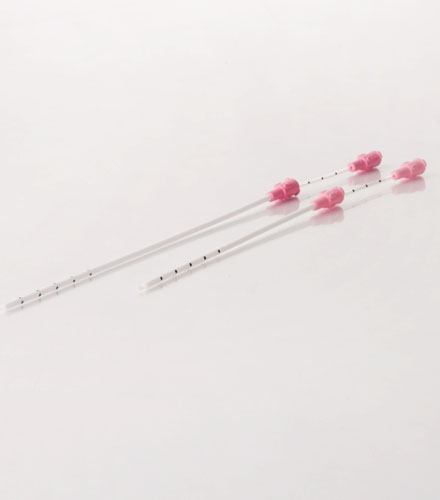Wallace® Classic
Embryo Transfer Catheters
Our Classic range offers a soft-profiled tip associated with some of the highest pregnancy rates across the world1-5.
Key Features
- Soft material and smooth tip minimizes trauma and maximizes success rates1-5
- Formable outer sheath to suit different patient anatomies
- Centimeter markings to show outer sheath depth and inner lumen protrusion for confidence of placement within the uterus
- Trial transfer catheters allow for confident positioning of the outer sheath before introducing the embryo loaded inner. Clinicians have found this technique to have a positive impact on pregnancy rates6
- The Classic range is fully compatible with the Sure View range
Availability
This product is available for sale worldwide. It is not available for sale in Taiwan.
Discover more about our other Embryo Transfer Catheters.

Key Product Information

Product Specifications
| Inner catheter inner diameter | 0.76mm ID |
| Inner catheter outer diameter | 1.52mm OD |
| Outer sheath outer diameter | 2.3mm OD |
| Volume of catheter not including hub (18cm catheter) |
0.081ml (81µl) |
| Volume of catheter not including hub (23cm catheter) |
0.104ml (104µl) |
| Volume per cm length of catheter | 0.0045ml (4.5µl) |
| Suggested loading volume | 0.5 to 1cm = 2.25 to 4.5µl |
| Stylet OD | 1.52mm OD |
| Stylet protrusion from outer sheath | 2.0mm |
Order Codes
| Reference | Description |
|---|---|
| 1816 | Soft 18cm Classic – Quantity: 10 |
| 1816N | Soft 23cm Classic – Quantity: 10 |
| 1816S | Intermediate 18cm Classic – Quantity: 10 |
| 2316 | Intermediate 23cm Classic – Quantity: 10 |

 My Clinic is in the United States
My Clinic is in the United States My Clinic is in Canada
My Clinic is in Canada